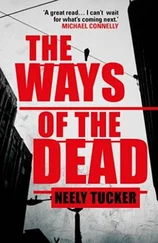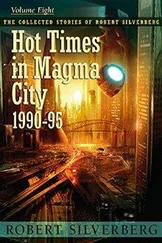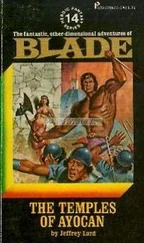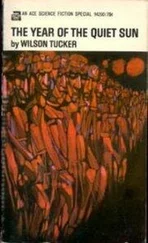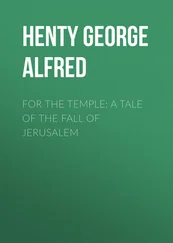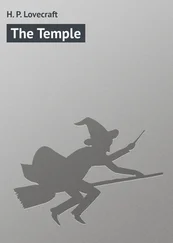Sanyogita was not a beer drinker and after the first glass she stopped. Aakash looked at me urgently.
‘Bhabi’s stopped,’ he said, ‘but that doesn’t mean you will too, no? You’ll drink with me tonight, won’t you?’
Sanyogita laughed at his filmy language. Aakash glanced at her, then turned back to me, and as if making light of his own intensity, said, ‘But what does it matter! Tomorrow you’re going to see my village. No friend of mine from Delhi has ever come with me to my village. It makes you like my brother. You don’t understand. We’ll have so much fun – people will come from all over. Truck-loads of people will come, women with their dupattas down to here.’ He held his hand to just below his chest. I looked over at Sanyogita, something I found myself doing less and less, and saw that her face had become small. Aakash’s passion for the outing seemed designed to exclude her. But then, turning to her, he said, ‘Bhabi, why don’t you come as well?’
A smile brightened on her face. She had felt Aakash’s subtle exclusion, then the excitement of unexpectedly being included. But his invitation – whether intended to do so or not – produced an ugly reaction in me. I didn’t want Sanyogita to come. Whatever world Aakash was taking me into, I wanted my responses to it to come up spontaneously. I didn’t want to have to think about how Sanyogita was responding. I said nothing at the time, but noticed Aakash watching me intently. Then his face cleared and he smiled. I thought he knew she wouldn’t come.
I hadn’t considered that Sanyogita, who knew me better than anyone else, would also have made something of my silence.
On the way back, a dirty orange sun slipped smoothly behind low sprawl and satellite dishes. A long straight road took us out of the city of colonies. Its small houses and patches of garden appeared in flashes. It seemed without centre and featureless. The bland stretch of road was interrupted by snarls of new flyover with orange railings. They dwarfed the city below, exposing the meanness of its proportions.
Uttam was driving. I leaned forward and said to him, ‘We have to go very early to Haryana tomorrow. It’s not far. Be ready by six. We’ll go first to Aakash’s and then they’ll tell us where to go from there.’
He nodded and reconfirmed the time. From the corner of my eye, I was aware of Sanyogita listening carefully. Just before I sat back, she turned away.
A moment later, she said, her eyes dully focused on two boys with painted moustaches who, after doing cartwheels and bridges, had approached the car for money, ‘I didn’t know it was tomorrow. I can’t come anyway. I’m having lunch with Ra.’
When we drove down Amrita Shergill Marg, the trees in the darkness seemed to burn with a strange, cold fire. At first I thought it was the effect of the yellow street light. But looking closer, I saw that the texture of their canopies had changed. They were featherlight and ablaze. Sanyogita’s mood alchemized.
‘Baby, look. The laburnum’s out!’
Aakash’s house! I knew he left it at four thirty a.m. after eating some ‘brad butter’. Then from five till two thirty, he was in Junglee. From two thirty to eleven, he covered the city on his Hero Honda for his lucrative personal trainings. After eleven, he returned home, perhaps only to sleep. I knew he lived there with his father, mother, two brothers, sister-in-law and year-old nephew. I imagined him picking his way through the darkness so as not to wake anyone. It was where his steel tiffin wrapped in blue polythene came from. Most of all, it was where I imagined Aakash on Sundays, the day we didn’t meet, the day he had an old-fashioned regard for: of curtains drawn, of not waking till noon and of eating unhealthy amounts of greasy food. And though I knew the points of this routine exactly, I couldn’t imagine the kind of place he lived in or even what the streets looked like. And without an image of this other place, this counterpoint to Junglee, Aakash’s existence seemed fictitious, a figment of the Delhi sprawl.
It was a city with a fragmented geography: a baggy centre of bungalows and tree-lined avenues, the British city; a walled and decaying slum to the north, the last Muslim city of both Zafar the emperor and Zafar my teacher; a post-independence city of gated colonies, with low houses and little gardens, stretching out in all directions; and beyond, new unseen cities, sometimes past city lines. But the sprawl was being slowly sewn together by new roads, buses and metros; the road to Sectorpur was part of a network of new, elevated roads, shooting out from a central stem, connecting city with airport and the construction sites and coloured glass of Gurgaon. These slab-like roads, with their orange railings, leaning white lights and marked, numbered exits, a concept until recently unknown to the Indian road system, performed infrastructural stunts, now splitting, now swooping down on unsuspecting neighbourhoods. Sectorpur was such a neighbourhood, a place to which the good road had brought life in the form of a property boom. And signs of this life, dull and bright, appeared close to its periphery: grey metal sheets concealing a metro station under construction; red highway tollbooths with newspaper still covering the windows; a city of concrete towers, dotted with the bright figures of Rajasthani women labourers.
The road swung right for Sectorpur, overshooting the turning for Aakash’s house. It was necessary to get off the elevated section at a further exit, make a U-turn past families sleeping and cooking under the flyover and drive back at ground level. In this short drive, the city beneath the highway returned with force in the form of cattle, fenced-in plots of overgrown land and roadside fruit sellers behind bright walls of produce. ‘Make a left just after the fruit sellers,’ Aakash had said.
The road took on the distinct aspect of an army neighbourhood. High walls on both sides with rusty iron spikes held back pink bougainvillea; girls in navy-blue and white salwar kameez waited for the bus to the Air Force School; and blue and white signs with the colours of the Indian flag in concentric circles like a dartboard, read: ‘16 Base Repair Depot’ and ‘Photography Prohibited’. Where the high walls retreated, there were keekar trees with thorn-filled canopies and gnarled black branches. They reached out into the road like a sinister, vegetal extension of the dawn mist.
The thin, bumpy road ended abruptly at a sky-blue metal gate. Uttam turned the car right and drove into a colony of three- and four-storey government flats.
I had seen these blocks of flats, with their little balconies and drainpipes on the outside, all over Delhi. In a country which couldn’t even standardize nuts and bolts, they were a rare achievement. Their squalor lay in their homogeneity and was not the Indian squalor, which was various and surprising. Small signs of that sunniness competed with the Sovietized scene. Coloured lights hung over the cemented verandas, a faded film poster could be seen through the iron bars of a window, and in the little patches of garden grew the Hindu sacred plants: banana, tulsi, a red hibiscus, its petals resting limply on the rusted points of a barbed-wire fence.
I stood outside for some moments, taking in the place. I noticed the yellow and black sign of a self-service convenience store, the clutter of motorbikes outside each little block of flats, the clothes drying on nylon ropes. I noticed these things because I thought this perhaps was where Aakash bought his ‘brad butter’, that one of these several bikes was possibly his and that on one of those nylon ropes I might see his fashionable clothes. It was this awareness of particularity, of feeling invested in Aakash, that broke the colony’s drab uniformity.
Читать дальше

